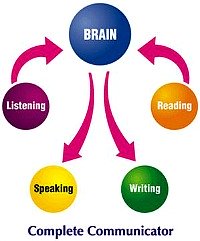 |
Learn English Locally, Apply It Worldwide! Enjoy Regular Practice |
The Past Simple Tense (Preterite)
Also known as preterite or simple past, this verb tense is used for actions that occurred in the past and which do not extend into the present. They were completed in the past.
Formulation of the Past Simple tense
The formulation of the Past Simple tense varies, according to the type of the verb, as below. You'll relieved to know that this is a tense that doesn't take auxiliary/helping verbs (do, be, have).
|
Regular Verbs With regular verbs, the past simple is marked by -d, -ed or -t at the end of the base or the infinitive form of the verb. Check for the pronunciation of these terminations.
|
Irregular Verbs On
a list of irregular verbs the Past Simple form of the verb is found in
the second column from the left. This position on the list is also
called 'the second principal part of a verb'. Examples:
|
Usage of the Past Simple tense
Decide when your Present Timeline begins and choose the Past Tense for all the actions you could find from the beginning of time until a split second before the present. (Adapted from Michael Strumpf and Auriel Douglas, The Grammar Bible. Owl Books, 2004)
Generally the simple past tense is used for events, habitual activities, and states in the past:
- Event: I drove my brother to school this morning.
- Habit: My mum cooked a cake every Sunday. (Often, when used in this way, the verb is accompanied by an adverbial that underscores the regularity of the situation described.)
- State: He was extremely sad when he lost of his tarantula.
Other uses of the Past Simple tense
We have an interesting situation in reported speech, when a person reports, observes, tells/says claims, suggests (all of these being called 'reporting verbs') about an action in the past. In this case we need to change a present tense to a past tense if the reporting verb is in a past form. This is also known as backshifting, sequence-of-tense (SOT) rule, succession of tenses.
Consider the following examples:
|
Normal Speech
|
Reported Speech
|
Further points to consider
Given that both the Present Perfect tense and the Past Simple tense are referring to a complete action, this also confuses many learners of English. The difference is that with the Present Perfect we do not specify the exact time of completion. However, if we add the time element, we must change the tense to Past Simple, to indicate completion in the past - yesterday, two weeks ago, last year, when I was young, etc.
|
Present Perfect
|
Past Simple
|
English Corner Weekly E-zine
Packed with knowledge, published on Tuesdays.
Get yours here!
Our Archives:
Our lessons in the names and sounds of letters, short & long vowel sounds, CVCs, CCVCs, CVCCs, sight words, vowel and consonant contrasts, etc.
Our lessons will help increase your vocabulary, word recognition, find meaning in context, skills for TOEFL tests and other games, for fun.
Here we shall build some lessons to help you improve your writing skills.
Lots of lessons: cause & effect, comparisons, linking signals, relative clauses, presenting information, expressing emotions and grammar games, of course. We had more lessons on: intensifying adverbs and phrasal verbs, expressing various concepts such as addition, exception, restriction and ambiguity. Lately we started some exercises: likes/dislikes, frequency adverbs (twice), verb tenses, etc.
Learn how to build a website, by using the SBI! system - start from the basics, developing a site concept and a niche, supply and demand, learn about profitability and monetization, payment processing, register domain, website structure and content as a pyramid. Also learn about the tools I'm using to build this website. We also covered how to build traffic, working with search engines, building a good system of inbound links, using social marketing and blogs with the SBI system, how to use Socialize It and Form Build It, how to publish an e-zine and how to build a social network in your niche.
We looked at a few games by now: Countable & uncountable nouns, Free Rice, Name That Thing, Spell It, Spelloween, the Phrasal Verbs Game, Preposition Desert, The Sentence Game, Word Confusion, Word Wangling, Buzzing Bees, and The Verb Viper Game.
Be prepared to play and learn more pretty soon.
